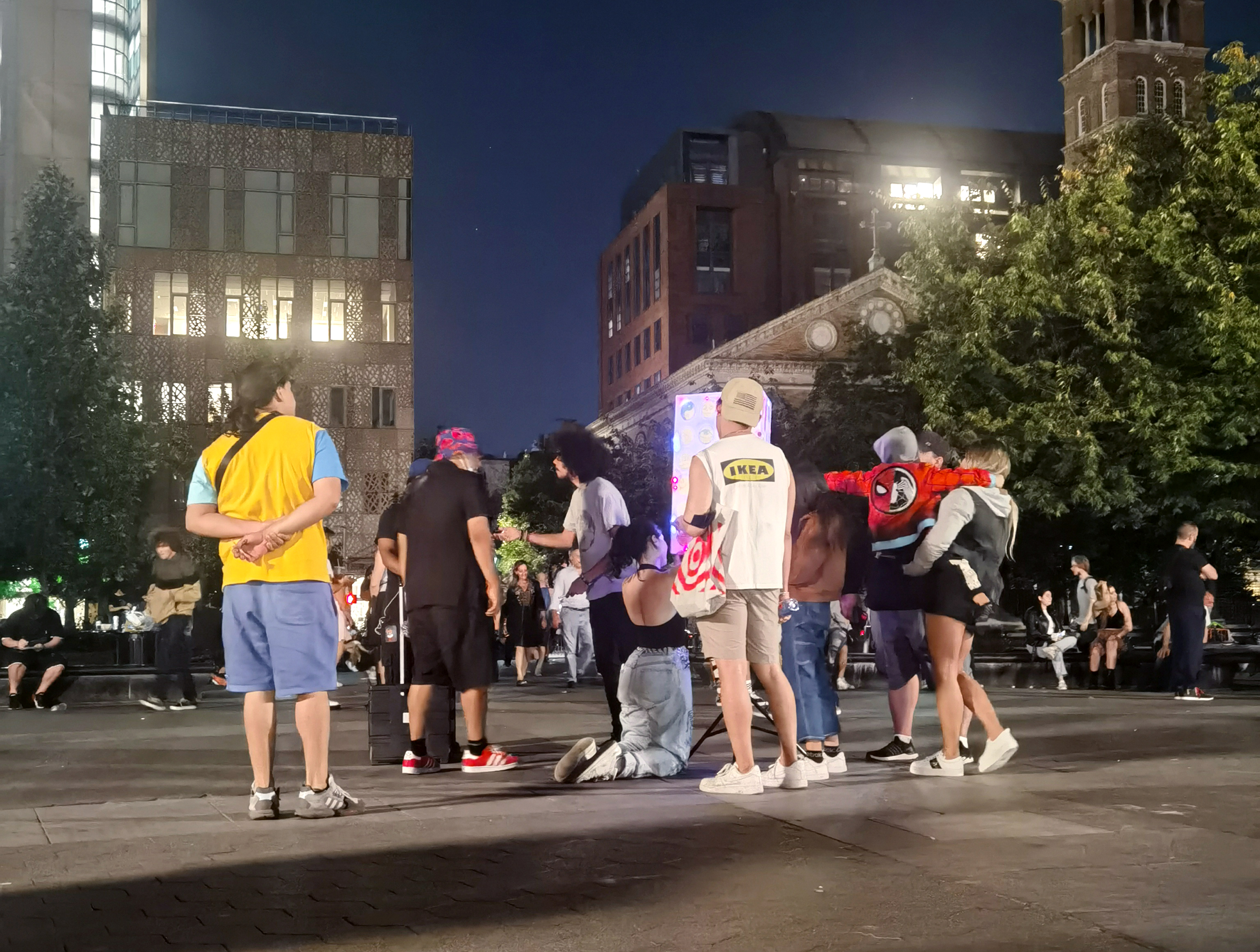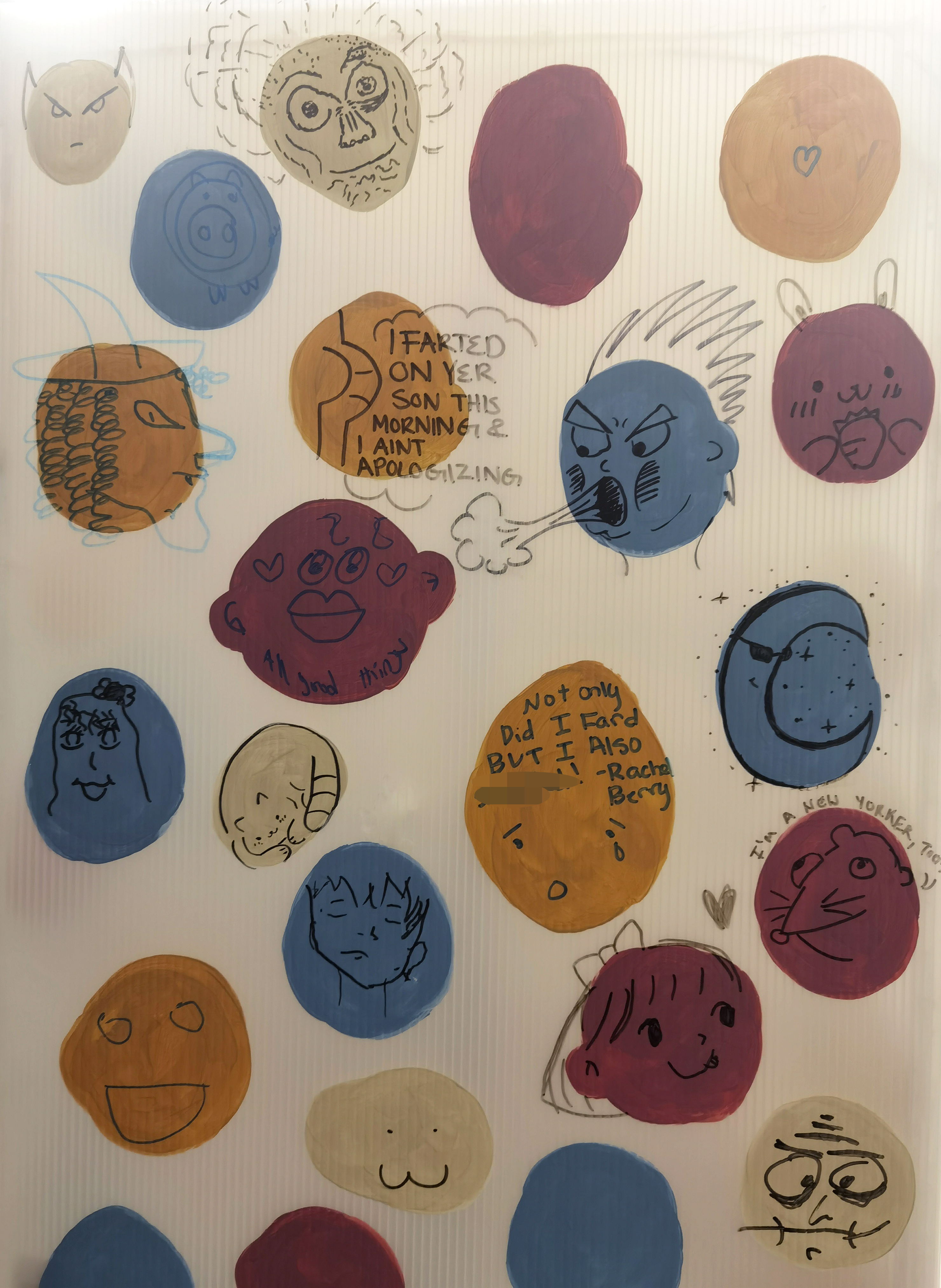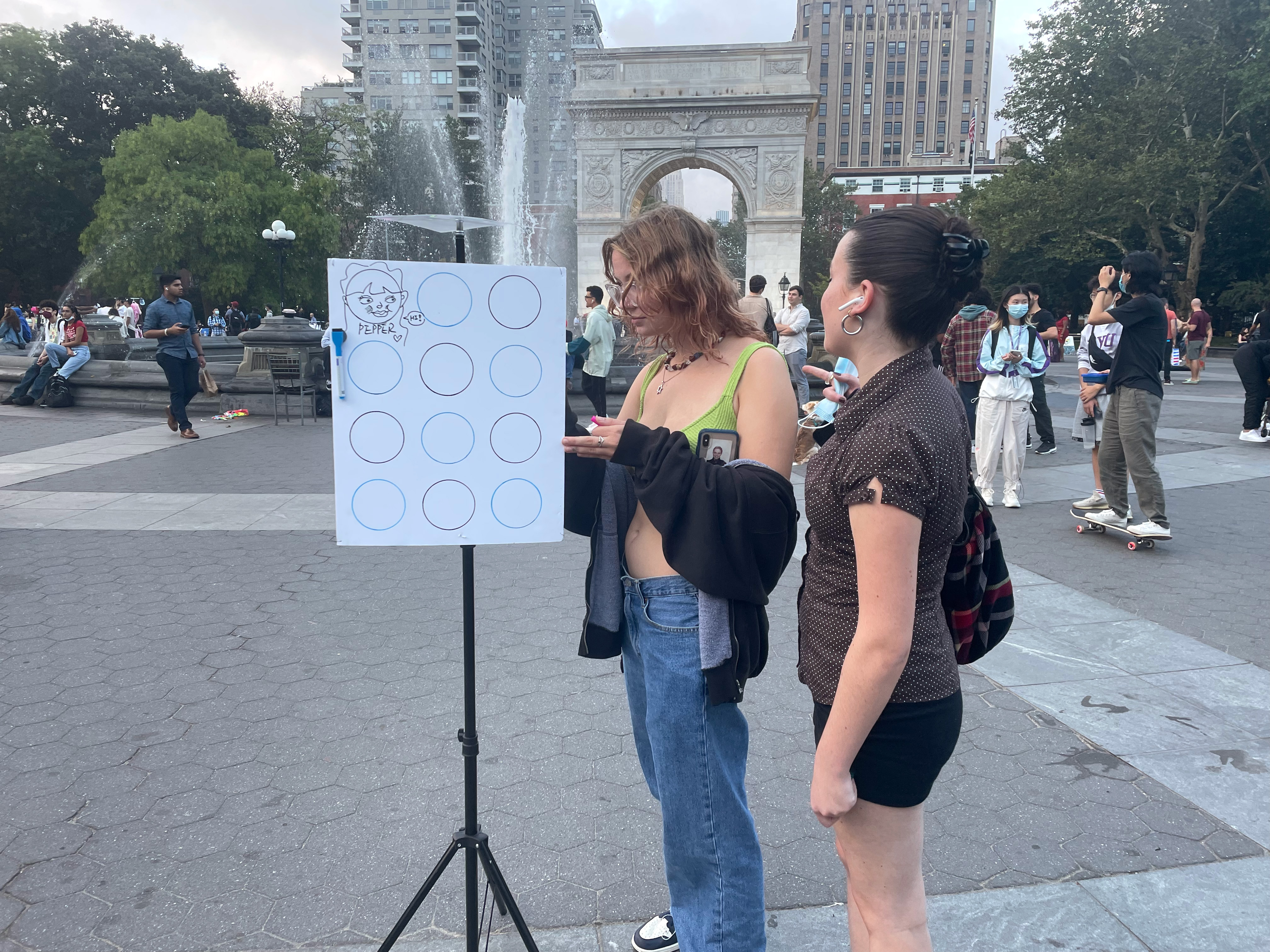Instruction Sets for Strangers / Parsons School of Design
Instruction sets for strangers is a project that seeks to connect strangers through a shared task, interaction, or other manifestation of curiosity, without giving these strangers any written or verbal instructions. In order to serve our chosen venue and its occupants best, it was necessary to research and understand the space's historical significance, its unique elements, and people's current relationship to it.


This project was created for Major Studio I | Interaction Design at the Parsons School of Design, under the instruction of Harpreet Sareen. I worked with Pepper Xiao (Parsons MFA DT '23) and Duo Xu (Parsons MFA DT '23) to create a piece for multiple strangers to interact with in Washington Square Park, in New York, NY.
For our project, we wanted to maximize interaction while maintaining simplicity. Since New York is a diverse, international city, we wanted the object to be accessible to a wide audience within the park. We decided to focus on the act of creation, using drawing as a means for the community of the park to create something together.
We constructed a simple structure, which consisted of a three-sided drawing surface mounted on a tripod. Markers were attached to the structures with magnets and coins, and there were several blank circles drawn on the structure prior to exhibition to act as nonverbal guides.
Process
We engaged with photojournalism tactics, mind mapping, brainstorming trees, and the AEIOU method to research our target population. Duo, Pepper, and I did all of these both independently and then as a group, collaboratively.
By tracking and observing the Activities, Environment, Interactions, Objects, and Users (AEIOU) of Washington Square Park, we were able to identify common trends and patterns. How is the space used? Who are the participants?
After researching our site and the target audience of this project, we began creating low fidelity prototypes and testing with the park population. We began by hanging a cloth installation across a walking path in the park, on the east side. This however, barely stopped any New Yorkers, and did not capture peoples' attention. In fact, several people walked directly into the installation.
With these observations in mind, we decided to change our location, as well as make the piece more clearly interactive. We brought the installation to the main square, and we changed the form. Instead of a hanging, loose cloth, we attached foam core to a tripod. We also added markers to the exterior and drew guide circles (these could be heads, basketballs, etc., whatever people interpreted) to signal that people could draw on the foam core. We observed the reception of this iteration, then added our edits to the final version of the project.
In our final installation, we again iterated based on visitors' interactions with the sculpture. We made it sturdier, provided more circles for people to draw within, and added remote lights in order to make the piece stand out even further at night. We observed a huge rush of activity with these changes. In the video, you can see the unbelievable number of interactions we observed with our final form. People were excited to be a part of a collective artwork in Washington Square Park, and they even recruited their friends and strangers to participate.

